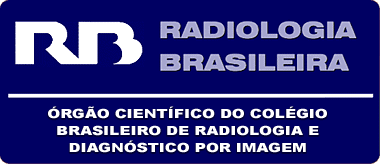Abstract
Objective:
To determine whether preterm infants diagnosed with intracranial hemorrhage (by transfontanellar ultrasound) at birth have cerebral lesions that are detectable by magnetic resonance imaging (MRI) upon reaching school age.
Materials and Methods:
MRI scans of the brain were obtained in 22 school-age children. Fifteen had presented intracranial hemorrhage at birth, and seven had not. We calculated the odds ratio (OR) for the occurrence of brain alterations detectable by MRI and the kappa index for discrepancies among the radiological reports.
Results:
The children without previous intracranial hemorrhage presented normal MRI findings. Of the 15 children with previous intracranial hemorrhage, 6 (40%) presented brain alterations on MRI: isolated ventricular alteration (dilation and asymmetry), in 2 (13.3%); and ventricular asymmetry accompanied by parenchymal lesion, in 4 (26.7%). The nine remaining children with previous intracranial hemorrhage (60%) presented normal MRI findings. The children with previous intracranial hemorrhage were more likely to present ventricular alteration (OR = 7.8) and parenchymal lesions (OR = 5.4).
Conclusion:
Ventricular and parenchymal brain alterations detected by MRI suggest isolated morphologic alterations that do not result in neurological impairment detectable on physical examination in school-age children.
Keywords:
Newborn; Premature; Intracranial hemorrhage; Magnetic resonance imaging; Child



